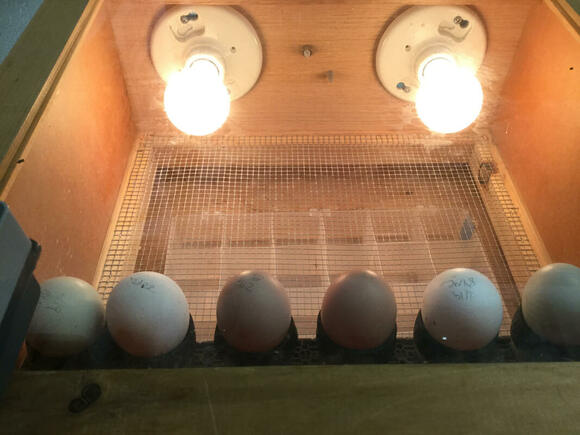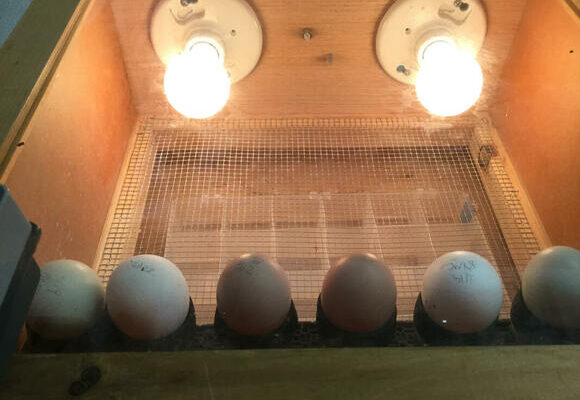The Ultimate Guide to Egg Incubators: Everything You Need to Know
Egg incubators play a crucial role in the hatching process, offering a controlled environment for nurturing eggs until they are ready to hatch. Whether utilized on farms, in hatcheries, or by passionate hobbyists, these devices provide a reliable means of safeguarding and nurturing developing embryos. In this comprehensive guide, we will delve into the essential aspects of egg incubators, shedding light on their significance and the key purposes they serve. Understanding the functionality and benefits of egg incubators is pivotal for those seeking to embark on the journey of hatching eggs successfully.
How Egg Incubators Work
Egg incubators are essential tools for successfully hatching eggs in artificial environments. Understanding the key mechanisms of egg incubators is crucial for ensuring a high hatch rate and healthy chick development.
Temperature Regulation
Maintaining a consistent temperature is vital for successful egg incubation. The optimal temperature range for most bird eggs is between 99.5 to 100 degrees Fahrenheit. Incubators utilize heating elements such as electric heaters or heat lamps to generate and maintain the required warmth. Consistent temperature is critical throughout the incubation period to support embryonic development, as fluctuations can lead to failed hatching or deformities in the chicks.
Humidity Control
Humidity plays a significant role in the development of embryos within the eggs. It is essential to uphold an appropriate humidity level, typically around 50-55% relative humidity, during the incubation process. Incubators employ various methods to regulate humidity, including water trays or automated systems. Adequate moisture is paramount for proper chick development, as it facilitates the exchange of gases through the eggshell and prevents dehydration of the embryos.
Egg Turning Mechanism
Egg turning is a fundamental aspect of egg incubation, as it prevents the embryos from sticking to the inner membrane of the eggshell, promoting proper blood vessel formation and muscular development. Incubators are equipped with automatic turning mechanisms that gently rotate the eggs at regular intervals, mimicking the natural nesting behavior of birds. This process ensures uniform heat distribution and promotes healthy embryonic growth, ultimately increasing the likelihood of successful hatching.
Understanding the intricate workings of temperature regulation, humidity control, and egg turning mechanisms in egg incubators is paramount for achieving successful hatching outcomes and nurturing robust chick development.
Types of Egg Incubators

When it comes to egg incubators, there are various types available, each designed with specific features to cater to different needs. Understanding the distinctions between these incubators is crucial to ensuring successful hatching. Let’s dive into the unique characteristics and benefits of each type:
Still-Air Incubators
Still-air egg incubators are designed with a simple air-heating element, promoting heat circulation by natural convection. However, due to the lack of a fan, these incubators have temperature variations, making them best suited for incubating eggs that are less sensitive to slight temperature changes, such as bird eggs.
Forced-Air Incubators
Forced-air egg incubators are equipped with a fan to ensure consistent airflow and temperature distribution. These incubators maintain uniform heat and humidity levels, making them suitable for a wide range of egg types, including poultry and game bird eggs.
Circulated-Air Incubators
Circulated-air egg incubators utilize a gentle fan to maintain consistent heat distribution, minimizing hot and cold spots within the unit. Their ability to provide uniform heat makes them ideal for achieving higher hatch rates with various types of eggs, including reptile and aquatic eggs.
Digital Controlled Incubators
Digital controlled egg incubators feature advanced technological capabilities, including programmable settings, automatic egg turning, and precise monitoring of temperature and humidity levels. These sophisticated models are often favored by commercial hatcheries due to their efficiency and precise control over the incubation process.
By understanding the unique characteristics of each type of egg incubator, hatcheries and breeders can make informed decisions to create optimal environments for successful egg incubation.
Choosing the Right Egg Incubator
When selecting an egg incubator, it’s crucial to weigh several factors to ensure it suits your specific needs, budget, and the type of eggs you plan to incubate.
Capacity and Size
The capacity and size of an egg incubator are essential considerations. It’s important to choose an incubator that can comfortably accommodate the intended number and size of eggs. Overcrowding can lead to uneven heating and potential harm to the embryos. A spacious incubator allows for proper air circulation, promoting uniform heating and the healthy development of the eggs.
Ease of Use and Maintenance
Opting for an egg incubator with user-friendly features is key. Look for incubators equipped with digital controls for precise temperature and humidity management. Automatic egg turning is also advantageous, as it mimics the natural behavior of brooding hens. Additionally, easy cleaning and maintenance features contribute to a hassle-free incubation process, ensuring optimal conditions for the eggs without causing unnecessary stress.
Durability and Longevity
Investing in a durable and reliable egg incubator is crucial for long-term use. A robust incubator that can withstand continuous operation will provide consistent results over time, offering reliability and peace of mind. It’s important to consider the materials and construction of the incubator, as well as the reputation of the manufacturer, to ensure durability and longevity.
By carefully considering these factors, you can confidently select the most suitable egg incubator for your specific requirements, ensuring a successful incubation process and healthy hatchlings.
Best Practices for Egg Incubation
When it comes to successful egg incubation, following best practices is crucial to ensure a high hatch rate and healthy chicks. Here’s a comprehensive guide that covers egg selection and preparation, setting up the incubator, monitoring and maintenance, as well as assisting in hatching to help you achieve optimal results.
Egg Selection and Preparation
Proper egg selection and preparation are key to a successful incubation process. It’s essential to choose fresh, fertile eggs from healthy hens. Handle the eggs with care, ensuring they are clean and free from cracks or deformities. Before placing the eggs in the incubator, store them in a cool, humid environment, preferably at a consistent temperature of around 55-60°F (13-16°C) for no more than seven days to maintain their viability.
Setting Up the Incubator
Setting up the incubator correctly is vital for creating a suitable environment for embryo development. Follow the manufacturer’s instructions for temperature and humidity settings, ensuring they are calibrated accurately. Place the eggs in the incubator with the pointed ends slightly down and rotate them at least three times a day. Monitor the temperature and humidity levels regularly, making necessary adjustments to maintain an optimal environment for embryo development. It’s crucial to conduct a test run before adding the eggs to verify the stability of the incubator’s conditions.
Monitoring and Maintenance
Consistent monitoring and maintenance are essential throughout the incubation period. Regularly check the temperature, humidity, and ventilation in the incubator, making small adjustments as needed. Keep a close eye on the developing embryos by occasionally inspecting the eggs with a cool, clean, and dry hand to ensure they are progressing as expected. Address any issues promptly, such as fluctuating temperature or power outages, to prevent adverse effects on the embryos.
Assisting in Hatching
As the hatch date approaches, observe for signs of hatching, such as chirping or movement within the eggs. Some embryos may require assistance to hatch due to positioning or membrane adherence. Carefully assist those in need by gently removing eggshell debris and membrane to prevent injury to the chick. After hatching, provide a warm, clean, and quiet environment for the newly hatched chicks or hatchlings, facilitating their transition into the brooding stage.
Ensuring proper egg selection, meticulous incubator setup, consistent monitoring, and careful assistance can significantly increase the likelihood of a successful hatch, resulting in healthy and thriving chicks. By following these best practices, you can optimize your egg incubation process and enjoy the rewarding experience of hatching new life.
Common Challenges and Troubleshooting
During the egg incubation process, several challenges may arise, requiring swift action for successful hatch rates and overall incubation success. Identifying and addressing these common issues is crucial for ensuring a smooth incubation experience. Below are common challenges and troubleshooting techniques to overcome them.
Infertile or Unsuccessful Eggs
Identifying infertile or unsuccessful eggs is essential for maintaining optimal conditions within the incubator. Typically, infertile eggs remain unchanged in appearance, showing no signs of embryonic development. To identify these eggs, candling – the process of shining a light through the egg to observe its contents – can be used. Once infertile or unsuccessful eggs are identified, they should be promptly removed from the incubator to prevent any potential contamination.
Temperature and Humidity Fluctuations
Maintaining stable temperature and humidity levels is crucial for successful egg incubation. Fluctuations in temperature and humidity can significantly impact the development of embryos. To manage these fluctuations, it is recommended to use quality egg incubators equipped with temperature and humidity control features. Additionally, having backup power sources, such as generators or UPS systems, can provide added protection during power outages. Regularly monitoring temperature and humidity levels and making adjustments as needed is essential for ensuring a conducive environment for embryo development.
In the event of power outages or equipment malfunctions, having a contingency plan is essential. This may include transferring eggs to an alternate incubator with stable conditions, utilizing heat retention materials, or seeking alternative power sources to maintain consistent temperature and humidity levels. Prior preparation and proactive troubleshooting measures can mitigate the impact of these challenges and maximize the chances of successful hatch rates.
Conclusion
In this article, we’ve explored the ins and outs of egg incubators and gained valuable insights into their significance in the egg hatching process. Understanding the intricacies of egg incubators is crucial for anyone involved in poultry farming or hatching eggs at home. By harnessing this knowledge, you can optimize the environment for successful egg incubation, resulting in higher hatching rates and healthier chicks.
By comprehending the various types of egg incubators, the factors affecting hatch rates, and the essential tips for optimal usage, you are equipped to take your egg hatching endeavors to the next level. Whether you are a seasoned poultry farmer or a novice enthusiast, utilizing the right egg incubator and implementing best practices can make a substantial difference in the outcome of your hatching efforts.
As we conclude, it’s important to apply the knowledge gained from this article to your egg hatching processes. By making informed decisions and incorporating the best practices discussed, you can maximize the success of your egg incubation ventures. Keep in mind the impact of temperature, humidity, and turning frequency, and strive to create the ideal environment for your eggs to hatch successfully. With this newfound understanding, you are better poised to achieve optimal results, ensuring the health and vitality of your hatched chicks.
